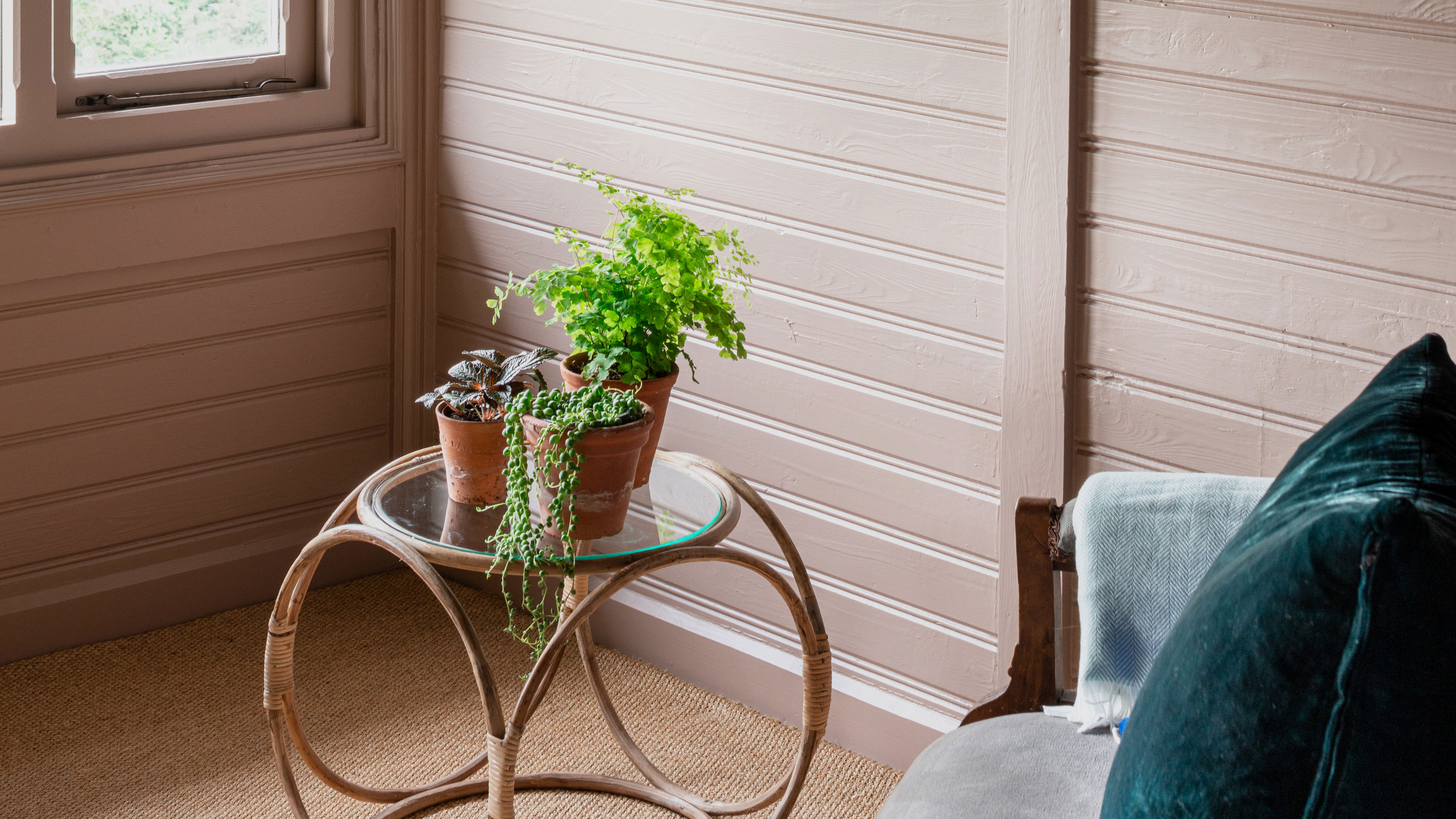Eggshell vs Satin: How to Decide Which Paint to Use
Undecided on whether to use eggshell vs satin? Here we give you the lowdown on what they both have to offer

You know what colour you want, now you need to decide on a finish — but when it comes to eggshell vs satin, which should you pick?
Are you looking for a low sheen finish on your doors and skirting boards? Then eggshell could be the answer. But do you want something that is durable and washable? Is satin a better choice? Do you want something more robust and durable than matt when painting a wall?
Check out our quick guide to get the answers and help you make the right choice for your next paint project.
What's the Difference Between Eggshell vs Satin?
Eggshell and satin differ through the sheen of the finish that they offer. Eggshell has a lower duller sheen than satin and is close to a matt or flat finish that you find in a lot of emulsions.
It is reminiscent of the shell of an egg — hence its name. Satin has a glossier finish than eggshell and reflects more light, so is more likely to show up any imperfections.
What is More Durable, Eggshell or Satin?
Of the two, satin is more durable and is slightly less likely to scuff or mark than eggshell and it's easier to clean when it does get marked.
This makes it a better choice, especially for woodwork such as painting skirting boards, than eggshell for high traffic areas like hallways and living rooms. Eggshell is better suited for areas that don’t get so much traffic such as ceilings, bedrooms and less used areas of a kitchen.
But, it's also a good alternative to flat paint in high traffic areas because it's more durable and easier to clean than flat or matt paint.

Which is Easier to Clean, Eggshell or Satin?
The mildly glossier finish of satin makes it slightly easier to clean and maintain than eggshell, but in reality there isn't a great deal of difference. Satin is easier to wipe clean while eggshell typically needs a little more effect to clean.
Ideally use a cloth and warm soapy water to wipe clean both. But eggshell’s slightly rougher surface means it will typically take longer to get it clean. If you have a stubborn stain use well diluted sugar soap, but be gentle.
Which is Easier to Apply?
When it comes to application there isn’t a great deal of difference between how to paint a room with eggshell and satin. They have very similar viscosity, but this can vary from brand to brand.
Typically eggshell is more forgiving when applying and doesn’t need quite so much painting experience to get a decent finish — ideal for novice DIYers especially when painting woodwork.
What Looks Better, Eggshell or Satin?
There isn’t a great deal of difference in the sheen between eggshell and satin, but as always when choosing a finish for your paint project, it’s a matter of personal choice.
If you want a very low sheen with a soft touch finish that isn’t quite matt then eggshell is the one for you. If you want something with a little more lustre then satin is the better choice. But consider how it fits in with the style of your home.
Eggshell is great in period homes and works well on woodwork and walls, while satin is typically suited to a more modern home.
Where to Use Satin and Eggshell
Eggshell and satin are both commonly used on woodwork such as doors, windows, and skirting boards to get a low sheen and forgiving finish.
But, as eggshell sits just above matt in the paint reflective hierarchy, it is a good choice as an alternative to a matt emulsion finish. It will still offer a low sheen and help hide imperfections, but is a little more durable than matt and has a smoother finish.
Get the Homebuilding & Renovating Newsletter
Bring your dream home to life with expert advice, how to guides and design inspiration. Sign up for our newsletter and get two free tickets to a Homebuilding & Renovating Show near you.
Steve Jenkins is a freelance content creator with over two decades of experience working in digital and print and was previously the DIY content editor for Homebuilding & Renovating.
He is a keen DIYer with over 20 years of experience in transforming and renovating the many homes he has lived in. He specialises in painting and decorating, but has a wide range of skills gleaned from working in the building trade for around 10 years and spending time at night school learning how to plaster and plumb.
He has fitted kitchens, tiled bathrooms and kitchens, laid many floors, built partition walls, plastered walls, plumbed in bathrooms, worked on loft conversions and much more. And when he's not sure how to tackle a DIY project he has a wide network of friends – including plumbers, gas engineers, tilers, carpenters, painters and decorators, electricians and builders – in the trade to call upon.

